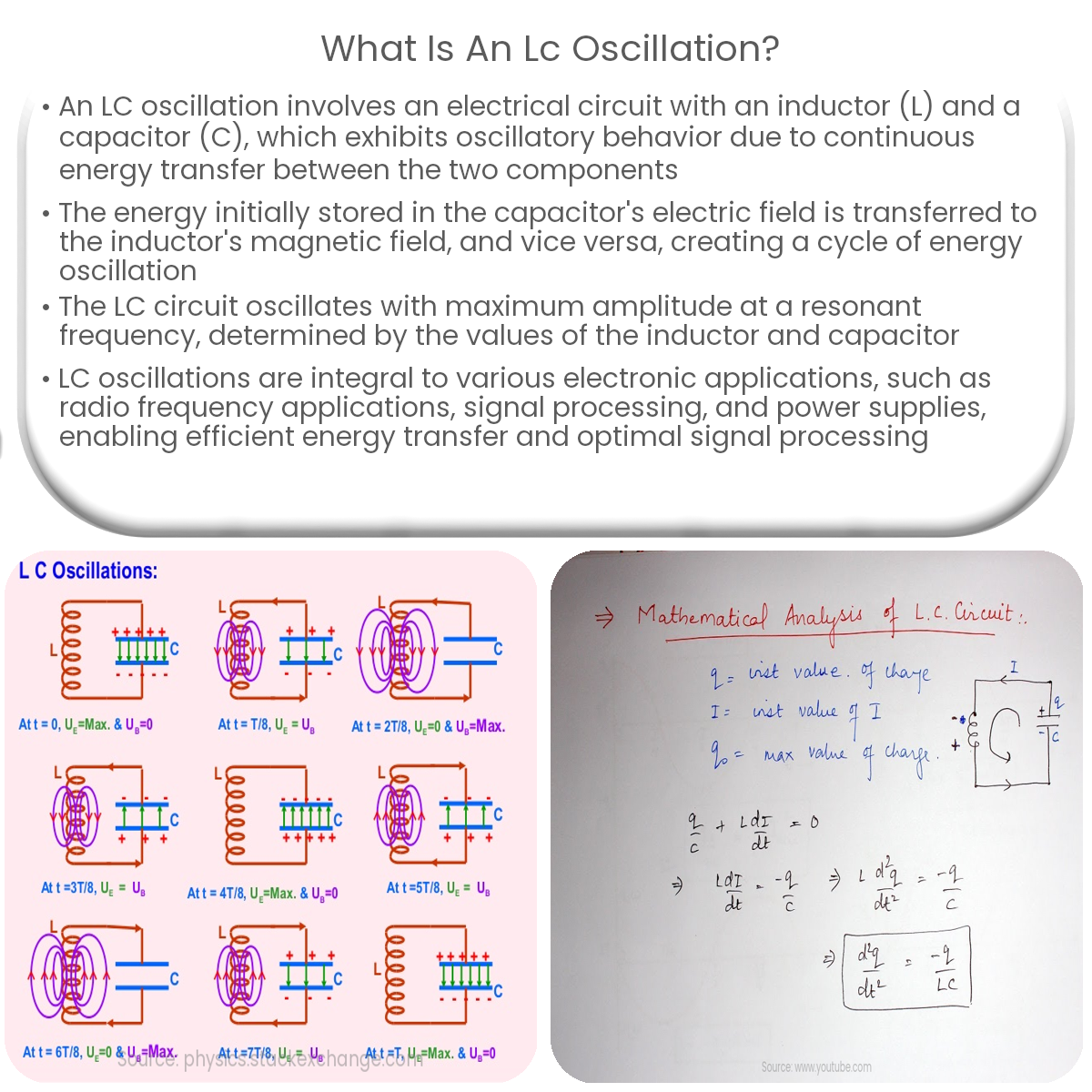An LC oscillation is an electrical circuit with an inductor and capacitor that exhibits oscillatory behavior, transferring energy between components.
LC Oscillation: An Overview
An LC oscillation, also known as an LC resonant circuit or LC tank circuit, is a type of electrical circuit consisting of an inductor (L) and a capacitor (C) connected in parallel or series. The circuit exhibits oscillatory behavior, where energy is continuously transferred between the inductor and capacitor. This behavior gives rise to a frequency response that displays a sharp peak at the resonant frequency.
Energy Transfer in LC Oscillations
In an LC circuit, energy is stored in the magnetic field of the inductor and the electric field of the capacitor. When the circuit is set in motion, the energy oscillates between the two components. Initially, the capacitor is charged, and its energy is in the form of an electric field. The charged capacitor then discharges, inducing a current through the inductor. As the current flows, the energy stored in the electric field of the capacitor is transferred to the magnetic field of the inductor.
When the capacitor is fully discharged, the inductor’s magnetic field begins to collapse, generating a back EMF (electromotive force) that causes the capacitor to recharge with the opposite polarity. This process repeats, resulting in oscillation between the capacitor and inductor. The oscillations continue until energy is dissipated due to resistance in the circuit or external factors.
Resonant Frequency
The resonant frequency is the frequency at which the LC circuit oscillates with maximum amplitude. It is determined by the values of the inductor and capacitor, and can be calculated using the formula:
f0 = 1 / (2π√(LC))
At the resonant frequency, the impedance of the LC circuit becomes minimum (in parallel configuration) or maximum (in series configuration), allowing maximum energy transfer between the inductor and capacitor.
Applications of LC Oscillations
- Radio Frequency (RF) Applications: LC oscillators are commonly used in radio frequency applications, including tuners, filters, and frequency synthesizers for communication systems.
- Signal Processing: LC circuits can be employed in oscillators, active filters, and wave-shaping circuits for signal processing tasks.
- Power Supplies: LC circuits are used in switch-mode power supplies for voltage regulation and smoothing, reducing noise and ripple.
In summary, LC oscillations play a crucial role in various electronic applications, enabling efficient energy transfer, precise frequency response, and optimal signal processing.


